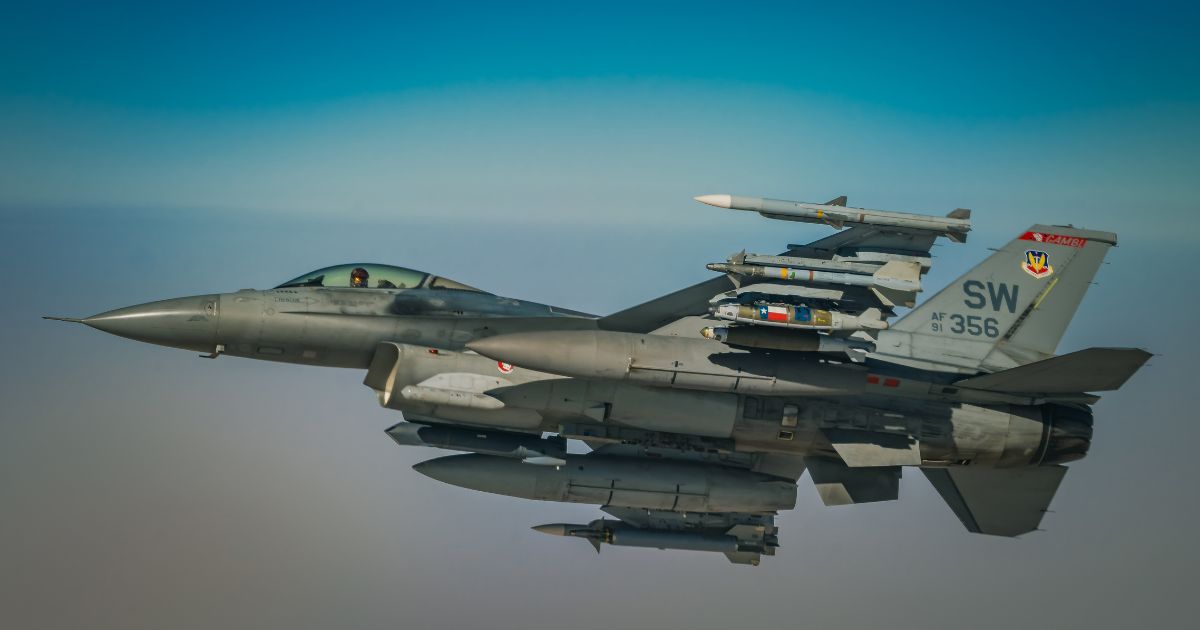A new report indicates that when the pilot of an F-16 scrambled to potentially shoot down a private plane that flew over restricted airspace in Washington made visual contact with the plane, he saw the final act of a tragedy taking place.
On Sunday, four people died when the Cessna Citation they were flying crashed in a wooded area of Virginia.
On Monday, The Washington Post — citing sources it did not name — reported an F-16 pilot told investigators he saw the Cessna pilot sitting in the left seat of the plane while being slumped toward the plane’s right side. The F-16s came in contact with the plane about 12 minutes before it crashed.
Visual contact came after multiple unsuccessful attempts to reach the plane by radio, the Post reported. Because the plane violated restrictions, six F-16s were scrambled, with two sent to approach the plane.
National Security Council spokesman John Kirby said the F-16 pilots sent aloft “did exactly what they were supposed to do — try to get on the radio, communicate to the pilot. That wasn’t working. Made themselves visible. That didn’t work. And tragically, it ended, obviously, in the crash and the death of all on board.”
The Post said data indicate a loss of pressurization could have led the pilot to become unconscious.
The Federal Aviation Administration said all four people aboard died “under unknown circumstances.”
The plane was registered to Encore Motors of Melbourne, Florida. Company owner John Rumpel said his daughter, Adina Azarian; his granddaughter, Aria; and their nanny were on board. The pilot was Jeff Hefner.
Rumpel was a major GOP donor who supported former President Donald Trump among other prominent Republicans.
The plane took off from Elizabethton, Tennessee, and had been heading to Long Island, New York. Communication with the plane was lost soon after takeoff, according to Reuters.
The National Transportation Safety Board said the plane took off at 1:13 p.m., and by 1:28 p.m. it was no longer in communication with air traffic controllers.
The Post report said the plane was at 31,000 feet when communication was lost.
Jeff Guzzetti, a former FAA and NTSB investigator, said flight-tracking data indicate whatever went wrong happened en route to Long Island. He said the pilot was not in control when it reached Long Island MacArthur Airport and then turned back the way it had come.
“Whatever happened, happened at altitude, which is a critical location to lose pressurization. The higher up in altitude you are, the less time you have to get on oxygen,” Guzzetti said.
The plane was at 34,000 feet when it flew past its destination and turned south, maintaining that altitude until its final spiral and crash.
Guzzetti said data showed the plane’s right engine was out of fuel when the crash took place.
Investigator Adam Gerhardt said the wreckage is “highly fragmented.”
Hassan Shahidi, president and CEO of the Flight Safety Foundation, said the plane’s route remains puzzling.
“It’s very unclear why it made this maneuver so close to its intended destination,” Shahidi said, according to the Post. “The aircraft, especially the Cessna airplane, it has to be directed by the pilot to take a certain flight path and altitude.”
William Waldock, a professor of safety science who teaches aircraft accident investigation at Embry-Riddle Aeronautical University in Prescott, Arizona, said cabin pressurization was “the most likely suspect,” according to ABC News.
“It went up to 34,000 feet and basically stayed there — all the way up, all the way back. The turn [away from New York and back south] is a little perplexing. But it kind of depends on what kind of autopilot system the aircraft had,” Waldock said.
Hypoxia, the medical term for the brain being deprived of oxygen, “happens slowly,” according to Anthony Brickhouse, a former member of the NTSB who is now an associate professor at Embry-Riddle Aeronautical University and director of its Aerospace Forensic Lab in Daytona Beach, Florida.
“It’s almost like you’re getting groggy, and you just can’t, you can’t piece things together,” he said. “And eventually you lose consciousness.”
This article appeared originally on The Western Journal.

























 Continue with Google
Continue with Google